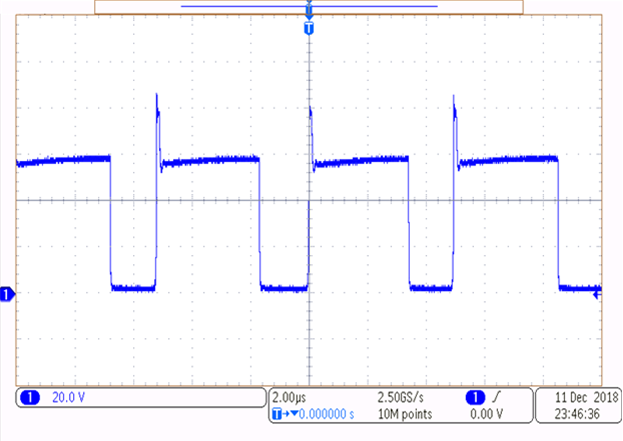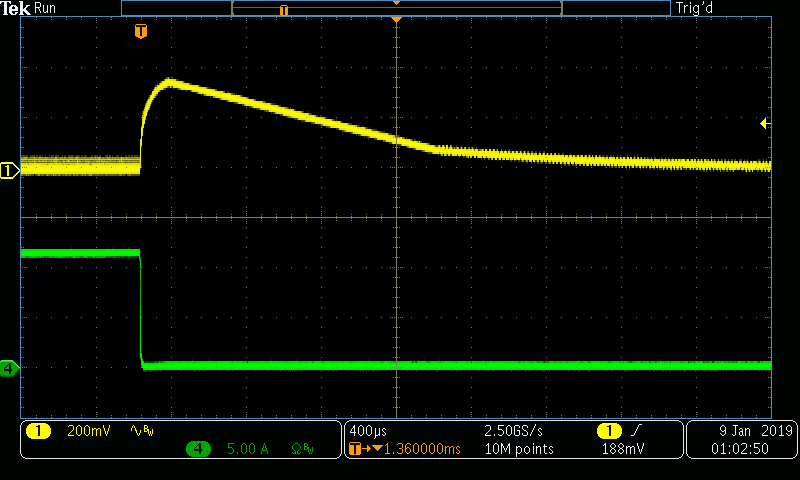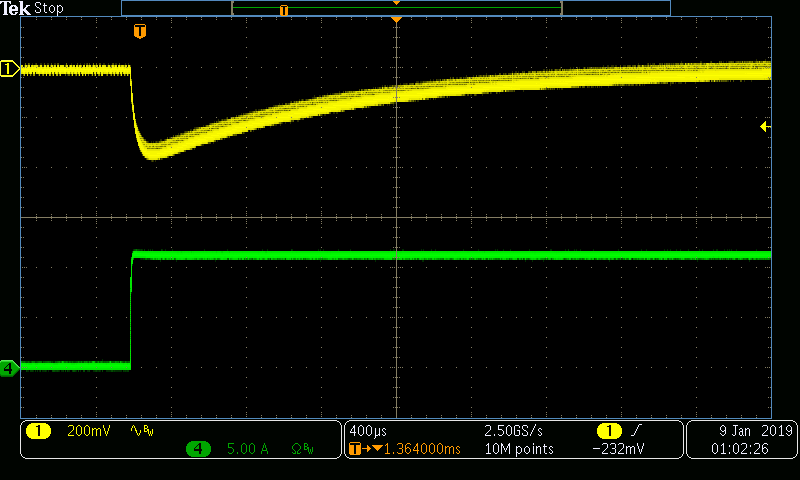ZHCSJK0A April 2019 – September 2019 UC1843B-SP
PRODUCTION DATA.
8.2.3 Application Curves
 Figure 12. Switch Node of Flyback Converter
Figure 12. Switch Node of Flyback Converter For the test in Figure 12, 40 V was applied to the input and 10 A was drawn from the output. Ringing can be present on the switching node if the converter is run in discontinuous conduction mode rather than the continuous conduction mode the design was run with.
 Figure 13. Load Step Down With 40 VIN
Figure 13. Load Step Down With 40 VIN  Figure 14. Load Step Up With 40 VIN
Figure 14. Load Step Up With 40 VIN For tests shown in and , 40 V was applied to the input and a load step was applied to the output. The load step applied was from 0 A to 10 A and 10 A to 0 A. Note that those currents do not include the 0.1-A pre-load. The curves show that the stability of the design due to the lack of ringing during the load step.